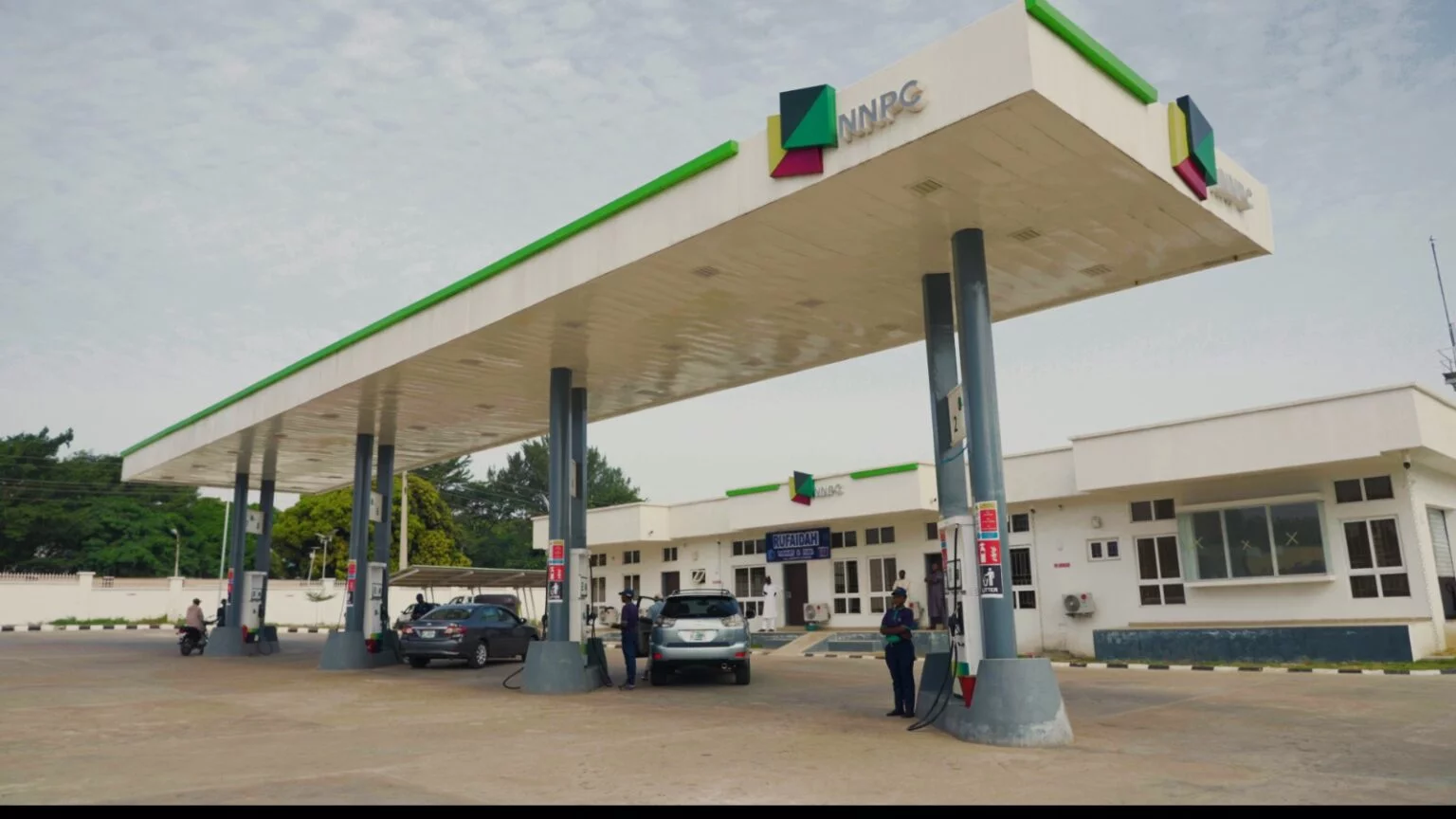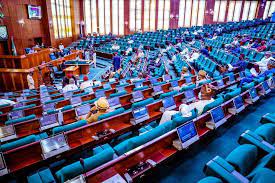FEATURES
Floating the Naira Before it Sinks
By Uddin Ifeanyi
One of the more telling pieces of conversation that I have been privy to around the economy’s foreign exchange woes is from a friend regaling me with dialogue he had late last year with the “Mallam” from whom he buys dollars on the parallel market.
Having lost much hope in the naira as a place to salt away his wealth, he begun actively buying the greenback a few years back. Sometime in November 2021, he asked his agent to source US$2,000 for him.The agent’s reply, “But, Oga, the thing too cost” was as instructive, then, as was my friend’s response: “Buy am, jo. You been tink say this people sabi wetin dem dey do?” My friend was so sure that the naira will exchange at US$1:N600 by year end 2022.
It was US$1:N470 when this transaction was consummated.In the debate between those who are calling for the naira’s free float and those who defend the current managed float arrangement, it is this aspect of the exchange dynamics that is to the front and centre. So long as the naira has more than one price, it will continue to support arbitrage activity ― putting up costs without delivering corresponding gains to domestic economic actors.
Besides, in combination with rampant domestic inflation, the gap between the naira’s official and parallel market prices will continue to make it difficult to store value in the local currency. Then, there is the pressure on the balance on the gross external reserve, as the central bank struggles to keep the rate in the official market policy-bound.
But by far the biggest test posed by pegging the naira’s exchange rate is that it messes up with the relationship between domestic prices as a tool for allocating resources.
Ordinarily a change in relative prices signals changes in consumers’ preferences for goods and services, all other variables remaining the same. In the same extent, these price indicators drive the direction of investment, with pricier goods and services (implying juicier returns on investment) getting first dibs on new money.
A managed float, such as we currently run, distorts this process ― reflecting the policymaker’s understanding of the balance between relative prices, rather than where the market would have it. It is small wonder, therefore, that capital importation into the country has continued to fall every year since 2019, with the foreign direct investment component the worst hit.
This does not mean, though, that defenders of our current managed exchange rate arrangement are just crying “Wolf” when they say that a float might see the naira’s exchange rate all over the floor ― with severe implications for the economy’s cost profile. In part, that is one consequence of the long term absence of “macroeconomic reasonability” in our husbandry of the domestic economy.
Much of the success of macroeconomic policy making is about the forward guidance provided by policymakers and the expectations that these then anchor in the markets. In the Nigerian incidence, it is not just that both these ingredients are absent. It is that the resulting stew is full of perverse incentives. The zero-bound interest rate policy for instance is an invitation to dollarise domestic savings that has not, in spite of its best intentions, meaningfully boosted output growth.
These connectedness between different parts of the economy mean that if the naira’s exchange rate will become market-determined at some point, it can only be part of a clearly thought through and coordinated set of reforms to the economy. Of course, these reforms will, at the monetary policy space, include understanding the level at which interest rates help keep inflation down while supporting full employment. It will then require that this be marked up by the rate of core inflation.
Beyond this, however, root-and-branch changes will have to be made to the public expenditure management process. Improvements in governments’ revenue generation (without further crimping businesses ― widening the tax base and walking back on easy to collect but regressive taxes like VAT) will top the list, here. Followed by improvements in the efficacy of governments spending. It will help that leakages and graft are plugged and reduced, if not eliminated. But it will matter more that the return on government spending rises.
These should see deficits drop to levels both more manageable and consistent with the economy’s needs. The portmanteau of reforms that will support a floating naira would also require that the policymakers’ bulimia for borrowing is aligned with the economy’s capacity to absorb such inflows.
Much of the changes required, therefore, to enable the naira float freely are the same ones required to fix the economy. They are changes that have to be initiated from the fiscal side, particularly reforms to the economy’s structure: how it is resourced; the nature and efficiency of its conversion processes; what it produces; and the markets it sells into. It matters, then, that the current government’s borrowing, especially when you include the large ways and means component from the central bank has been implicated in unstable and rapidly rising prices.
We must agree a process to rein this in, including putting in place a process for determining the federal government’s medium-term capital expenditure need, and capping the annual public expenditure borrowing requirement at a proportion of this. On its own, an increase in government spending is not necessarily all negative. Combined, though, with a central bank that is subordinate to the finance ministry and a large budget deficit it begins to present adverse effects on domestic prices.
What does this mean for the ethos around central banking independence? The pandemic may have invited central banks across the world to cross red lines in the financing of their domestic economies, but it is a fair bet that the restraints in the CBN Act on the monetary authority’s ability to monetise the fiscal deficit still make sense as we seek to transition to a private sector-led, market-based economy.
Uddin Ifeanyi, journalist manqué and retired civil servant, can be reached @IfeanyiUddin.

NNPCL’s New Culture of Transparency, Discipline Strengthens Financial Performance
By Enam Obiosio
The Nigerian National Petroleum Company Limited (NNPCL) is recording stronger financial and operational outcomes as its new culture of transparency, accountability, and capital discipline continues to take hold.
This shift is being reinforced by the company’s decision to publish audited financial statements, hold earnings calls, and open its books to independent analysts.
One of the analysts who reviewed the 2024 results, former Chief Financial Officer and Chairman of M.E Consulting Limited, Mr. Victor Eromosele, provided an independent breakdown that is shaping public understanding of the company’s progress.
In a media chat, Mr. Eromosele explained that he converted the N45.1 trillion revenue and N5.4 trillion profit into dollars to ensure comparability given the recent movement in the naira.
“The first thing I did was to convert it to the United States dollars because we all know what has happened to the naira recently,” he said.
“If you look at it in dollars you would find out that the top line instead of N4.5 trillion is actually 31.1 billion dollars. The bottom line instead of N5.4 trillion is actually 3.7 billion dollars.”
His analysis placed NNPCL beside global peers such as Chevron and ENI. While Chevron posted 193 billion dollars and ENI 198.7 billion dollars in revenue, NNPCL’s strength emerged in its efficiency.
“If you compared the bottom line with that of the top line which is the margin, you would find a situation where NNPCL for example is at 11.8 percent, while ENI is at six percent and Chevron is at nine percent,” he noted.
“Looking at the figures, it shows NNPCL did better.”
He also highlighted 56 percent asset growth and a 28 percent return on capital employed, up from 23 percent the previous year; metrics he described as healthy and consistent with investment grade performance.
These indicators reflect the broader reforms under the Petroleum Industry Act, including the shift from a government revenue collector to a commercially structured energy company that pays taxes, royalties, and dividends clearly and independently.
The company now publishes IFRS-compliant audited accounts, reinforcing visibility and external validation.
According to Mr. Eromosele, once the numbers are assessed on a stable global baseline, “one can say NNPCL actually did well.”
NNPCL continues to strengthen transparency, operational discipline, and global competitiveness in line with its long-term transformation agenda.
FEATURES
Victor Okoli: The Young Nigerian Tech Founder Building Digital Bridge Between Africa and America

Victor Chukwunonso Okoli, founder of Vnox Technology Inc. (USA) and Vnox Limited (Nigeria), is steadily emerging as one of the most promising new voices in global travel-tech. His mission is clear: bridge the technological gap between Africa and the United States, redefine global travel systems, and empower a new generation of skilled youths through innovation-driven opportunities.
In a statement issued in Onitsha, Anambra State, by Vnox Limited (Nigeria), the company emphasized Okoli’s growing influence as a Nigerian international graduate student contributing meaningfully to U.
S. innovation. His rising travel-technology platform, FlyVnox, currently valued at an estimated $1.7 million, is positioning itself as a competitive player in the global travel ecosystem.Okoli explained that Vnox Technology was founded to “train, empower more youths, create global employment opportunities, and drive business growth through our coming B2B portal inside the FlyVnox app.” The platform’s new B2B system aims to support travel agencies, entrepreneurs, and businesses across Africa and the diaspora—giving them access to modern tools, previously inaccessible technologies, and global opportunities.
Several young men and women are already employed under the expanding Vnox group, with more expected to join as the brand grows internationally.
Born and raised in Eastern Nigeria, Okoli’s early life exposed him to the realities and frustrations faced by international travelers and diaspora communities. After moving to the United States for graduate studies, he transformed those experiences into a bold technological vision—building systems that connect continents and create seamless mobility for users worldwide.
At the center of that vision is the FlyVnox app, a modern airline-ticketing platform built with global users in mind. Combining American engineering precision with African mobility realities, FlyVnox offers international flight search, multi-currency support, secure payments, transparent pricing, and a clean, intuitive interface.
Beyond FlyVnox, Okoli has built a growing tech ecosystem under Vnox Technology Inc., which oversees several innovative ventures, including: Vnox TravelTech Solutions LLC (FlyVnox App), VnoxPay (fintech), VnoxShop / Zyrlia (e-commerce)
VnoxID / Nexora (digital identity and smart business card solutions)
Vnox Limited (Nigeria) anchors African operations, media services, and talent development—ensuring the brand remains rooted in its home continent even as it grows globally.
Okoli’s work has broad significance for both Africa and the United States. He represents the powerful impact of immigrant entrepreneurship on global competitiveness—creating new jobs, driving innovation, strengthening U.S.–Africa commercial ties, and contributing to the development of practical, scalable technologies.
The statement concludes that Vnox Technology is a brand to watch. As FlyVnox gains international traction and the Vnox group expands its footprint, Victor Okoli stands as a symbol of a rising generation: African-born, globally minded, and building technologies that connect and serve the world.
FEATURES
Governor Sule: Driving Economic Reforms from Policy to People in Nasarawa State

From Leo Zwanke, Lafia
In Nigeria’s evolving governance, few leaders have gained as much recognition for reform-driven innovation at the subnational level as Governor Abdullahi Sule of Nasarawa State. From fiscal prudence to industrialisation, agricultural transformation to human capital development, the engineer-turned-technocrat has steadily positioned Nasarawa as a model for how subnational governments can translate macroeconomic reforms into tangible benefits for their citizens.
At the recent Nigeria Development Update (NDU), organised by the World Bank in Abuja with the theme “From Policy to People: Bringing the Reform Gains Home,” Governor Sule was a panellist alongside national and international development leaders.
He was introduced as a governor whose economic insight and governance style exemplify how reform implementation at the grassroots can sustain the federal government’s policy direction.“Governor Sule represents the bridge between Nigeria’s macroeconomic reforms and how these policies are domesticated at the state level,” said Shubham Chaudhuri, the World Bank Country Director for Nigeria. “He’s not only talking about reforms; he is implementing them in ways that citizens can feel.”
Before venturing into politics, Abdullahi Sule built a career in engineering, energy, and industry—serving as Managing Director of Dangote Sugar Refinery and leading other private sector initiatives. His private sector exposure, as many observers note, shaped his pragmatic approach to governance.
“The Governor came into office with a technocrat’s mind,” noted Dr. Ahmed Mohammed, an economist and lecturer at Nasarawa State University, Keffi. “He understands that policy documents mean little unless they are converted into livelihood gains.”
That philosophy—bridging policy with the people—is evident across his governance initiatives, aligning seamlessly with the World Bank’s recent development theme.
Agriculture remains Nasarawa’s economic backbone, engaging over 70 percent of its population. Governor Sule’s administration has revitalised the sector through targeted mechanisation, input distribution, and market linkage interventions.
Through partnerships with the African Development Bank (AfDB) and the World Bank’s Agro-Climatic Resilience in Semi-Arid Landscapes (ACReSAL) project, the state has distributed modern tractors, improved seedlings, and irrigation facilities to thousands of farmers.
In Yamaltu Deba, a community in Awe Local Government Area, farmer Mallam Abdullahi Umar explained how the tractorisation scheme has transformed their operations.
“Before, we used hoes and cutlasses. It took us two weeks to plough a hectare. Now, with tractors, we do that in one day. Our yields have doubled,” he said proudly.
Governor Sule himself often emphasises the need for “commercially viable farming” and “agriculture as a business, not a subsistence activity.” His administration has created a framework for farmer clusters, linking smallholder producers with large-scale processors, thereby addressing one of Nigeria’s major agricultural bottlenecks—post-harvest loss.
These interventions are not isolated. They feed into the national agenda of improving food security, generating rural employment, and reducing inflation. In Nasarawa, farmers are reporting higher incomes and expanded market access, a reflection of the governor’s commitment to inclusive growth.
Often called the “Home of Solid Minerals,” Nasarawa State is richly endowed with tin, lithium, barite, and other minerals. Yet, for decades, the sector remained largely informal, with little contribution to state revenue.
Governor Sule has changed that narrative through policy reforms that encourage private sector participation and responsible mining. Under his administration, Nasarawa has developed a solid minerals development policy, created a one-stop investment office, and attracted both domestic and foreign investors.
Earlier this year, the governor led an investment mission to India, where he met with industrial leaders and promoted opportunities in Nasarawa’s mining, energy, and agricultural value chains. The result was a flurry of interest from companies seeking to establish operations in the state.
“Governor Sule’s investment drives are opening Nasarawa to the world,” said Mr. Nabil Saleh, a consultant in mining development. “For the first time, there’s a clear structure and transparency around mining licences, community agreements, and environmental safeguards.”
In Karu and Keffi, local youths who previously relied on artisanal mining now participate in formalised mining cooperatives supported by state-led training programmes. This not only ensures environmental safety but also helps the state retain a greater share of mining revenue.
Additionally, Governor Sule’s administration has set up an Industrial Development Plan anchored on the establishment of industrial parks in Lafia, Doma, and Karu. The parks are designed to host agro-processing, mineral refining, and light manufacturing industries. This initiative ties directly into the World Bank’s message of translating macro-level reforms into job creation and improved livelihoods at the subnational level.
Economic reforms cannot thrive without functional infrastructure. In Nasarawa, infrastructure development has been a cornerstone of the Sule administration.
From the dualisation of major highways connecting the state to Abuja, to the ongoing construction of feeder roads linking rural communities with markets, the administration has prioritised roads as key drivers of commerce.
The Mararaba–Udege–Uke feeder road, completed in 2024, now connects thousands of farmers to urban markets, significantly reducing transport costs and spoilage.
“It used to take us two hours to reach Lafia with our goods; now it’s less than 40 minutes,” said Mrs. Asabe Luka, a tomato farmer from Obi LGA. “We no longer lose our produce on bad roads.”
Power and energy are also central to Nasarawa’s reform narrative. Through collaboration with the Nigeria Electrification Project (NEP) and independent power producers, the state is expanding rural electrification, powering small businesses and industries.
Governor Sule’s energy policy aims to make Nasarawa a net supplier of power to neighbouring states, leveraging its hydro and solar potential.
“Access to power is central to our industrial ambition,” the governor said at a recent state economic forum. “Without energy, reforms remain theoretical. That’s why we’re integrating renewable energy solutions into our development plan.”
For Governor Sule, economic growth is only sustainable when accompanied by human capital development. The state has, therefore, increased investment in education, healthcare, and social protection programmes.
In 2025, the governor flagged off the integrated Measles-Rubella and Polio Immunisation Campaign in Akwanga, with support from UNICEF and the World Health Organisation (WHO). This campaign, which is said to reaching over 1.37 million children, was part of the administration’s wider commitment to preventive healthcare.
“We are determined to eliminate vaccine-preventable diseases and ensure that every child in Nasarawa can live a healthy life,” Governor Sule declared during the flag-off.
The state has also revitalised its primary healthcare centres, constructed new hospitals, and initiated the Nasarawa Health Insurance Scheme (NHIS), which now covers over 120,000 residents.
In education, Nasarawa has built and renovated hundreds of classrooms, recruited teachers, and introduced digital learning tools in partnership with donor agencies.
Mrs. Rachael Musa, a teacher in Keana, described how digital education is changing learning outcomes:
“We now use tablets to teach basic science and mathematics. The children are more interested, and parents are beginning to value education even more.”
The Nasarawa State Scholarship Board has been revamped to ensure fair and transparent allocation of bursaries, especially for female students pursuing science and technology courses.
According to the chief press Secretary to the Governor, Ibrahim Addra who noted that the Nasarawa State Governor, His has been honoured with the prestigious Platinum Award and recognition as Education Ambassador in Lagos Nigeria.
He said the honour bestowed on Governor Sule is at the instance of the Independent Newspaper which referenced the Governor’s “investment, advocacy and promotion of child education in Nasarawa State which resonate across the country.”
In a letter notifying the Governor of the award, Independent Newspaper said, “If Sir Ahmadu Bello were to look back from his grave, he would no doubt be proud of Governor Abdullahi Sule for sustaining the legacy of free primary education.”
The award ceremony was held on Thursday, October 9, 2025, at the Eko Hotel and Suites, Victoria Island, Lagos.
Governor Sule has since expressed gratitude to the Daily Independent for recognising the efforts of his administration to give the education sector the deserved attention through huge budgetary provision, innovation, supervision, and uncommon commitment.
These social investments and Educational Reforms directly support the World Bank’s reform agenda, which emphasises human capital as the foundation of economic transformation.
Under Governor Sule, Nasarawa has emerged as one of the most fiscally disciplined states in Nigeria. The State Fiscal Transparency, Accountability, and Sustainability (SFTAS) initiative—a joint programme of the Federal Government and the World Bank—ranked Nasarawa among the top-performing states in financial reporting, budget transparency, and citizens’ engagement.
The administration has digitised the state’s revenue collection system, introduced e-procurement, and created a Public Procurement Bureau to monitor contract awards. These reforms have improved public trust and investor confidence.
“Governor Sule’s approach to governance is evidence-based,” noted Dr. Joy Adamu, a governance analyst. “His administration publishes budget details online and invites civil society to track spending. That’s rare in many states.”
The 2025 budget, valued at over ₦149 billion, focuses heavily on capital expenditure, targeting agriculture, infrastructure, and education. The governor has described it as a ‘budget of continuity and consolidation’, aimed at completing legacy projects and sustaining fiscal reforms.
The Nigeria Development Update’s message is the need to ensure that macroeconomic reforms such as subsidy removal, foreign exchange unification, and fiscal tightening translate into visible improvements in citizens’ welfare.
Governor Sule’s Nasarawa model aligns perfectly with this philosophy. His state’s economic agenda mirrors national priorities while remaining locally driven.
“Reforms must touch the lives of people directly,” the governor said during the World Bank panel. “That is why we design our programmes to impact farmers, traders, miners, and small businesses, not just government statistics.”
By investing in production, transparency, and human capital, the Sule administration demonstrates that subnational governments can serve as catalysts for national reform success.
In Nasarawa, the story of reform is not just told in government memos—it’s lived by ordinary people.
In Doma, cassava processor Mrs. Maimuna Adogi recounted how a state grant enabled her to expand her processing mill.
“Before the grant, I employed only two people. Now, we are ten. I can feed my family and even save for my children’s school,” she said.
In Keffi, youth entrepreneur Tanimu Musa described how the Nasarawa Enterprise Development Scheme (NEDS) helped him scale his small welding business.
“The state gave us training and small loans. Now I get contracts from local construction firms,” he explained.
These micro-level testimonies echo the theme of “From Policy to People,” proving that reforms are only successful when their impact is measurable in people’s lives.
Governor Abdullahi Sule’s reform trajectory provides a powerful case study in how subnational leaders can domesticate and sustain national reforms. His administration’s blend of technocratic precision, fiscal responsibility, and citizen-focused programmes stands out in Nigeria’s subnational governance landscape.
As Nigeria seeks to stabilise its economy and build inclusive growth, the Nasarawa model offers valuable lessons in investing in sectors that touch people directly, agriculture, education, and health, while pursuing transparency and accountability as the foundation for investor trust, and engaging communities in policy design and delivery.
From the fields of Doma to the classrooms of Keana, and the mining pits of Udege to the industrial estates in Lafia, the gains of reform are becoming visible.
In the words of the governor himself: “When people begin to feel government policies in their pockets and in their homes, that’s when reforms become meaningful. That’s what we are doing in Nasarawa.”































